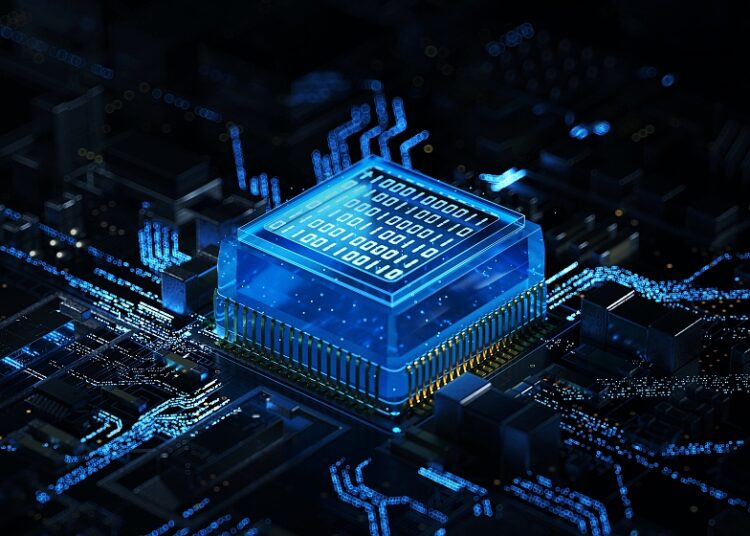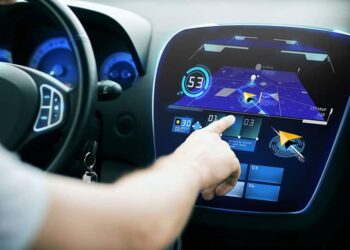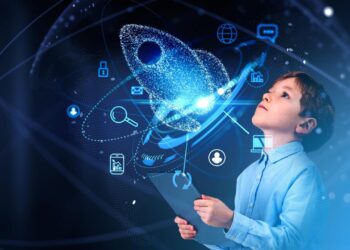Architectural Innovations

The very foundation of computing – the processor – is undergoing a radical evolution, moving beyond the conventional von Neumann architecture to specialized designs optimized for speed, efficiency, and specific complex workloads.
A. Accelerated Processing Units (APUs) and Hybrid Designs: Traditional computing often separated the roles of the Central Processing Unit (CPU) for general tasks and the Graphics Processing Unit (GPU) for visual rendering. However, Accelerated Processing Units (APUs) integrate these functionalities onto a single die, allowing for seamless communication and more efficient data transfer between the CPU and GPU cores. This hybrid design is crucial for modern applications demanding both parallel processing (like gaming, video editing, and AI inference) and sequential task execution. Beyond APUs, specialized accelerators like Field-Programmable Gate Arrays (FPGAs) and Application-Specific Integrated Circuits (ASICs) are gaining prominence. FPGAs offer reconfigurable hardware, allowing developers to customize their logic for specific tasks, while ASICs are purpose-built chips designed for ultimate efficiency in a singular function, such as Bitcoin mining or AI acceleration. These tailored solutions deliver unparalleled performance for their intended applications, moving away from the “one-size-fits-all” approach of general-purpose CPUs.
B. Neuromorphic Computing: Brain-Inspired Architectures: Taking inspiration from the human brain’s remarkable efficiency and ability to learn, neuromorphic computing represents a radical departure from conventional digital processing. Instead of a separate processor and memory, these architectures integrate computing directly within memory units, enabling highly parallel and event-driven processing. Projects like IBM’s TrueNorth and Intel’s Loihi are pioneering chips that consume significantly less power for certain AI tasks, particularly those involving continuous learning, pattern recognition, and sensory data processing. These systems excel at handling noisy, real-world data and adapting over time, mimicking biological intelligence more closely. This brain-inspired approach promises to revolutionize autonomous systems, real-time sensor processing, and edge AI applications where energy efficiency and rapid learning are paramount.
C. Quantum Computing: Harnessing Subatomic Realities: The ultimate frontier in computing, quantum computing, leverages the principles of quantum mechanics to solve problems that are intractable for even the most powerful classical supercomputers. Unlike classical bits that represent either 0 or 1, quantum bits (qubits) can exist in multiple states simultaneously (superposition) and become interconnected in a phenomenon called entanglement. This allows quantum computers to process vast amounts of information simultaneously and explore multiple solutions concurrently. Companies like IBM, Google, and Rigetti are at the forefront, developing quantum processors using technologies such as superconducting circuits, trapped ions, and photonic systems. While still in its early experimental phase, quantum computing holds immense promise for revolutionizing fields like drug discovery (simulating molecular interactions), material science (designing novel compounds), complex financial modeling, and breaking modern encryption algorithms, promising a paradigm shift in computational capability for highly complex problems.
D. In-Memory Computing and Processing-in-Memory (PIM): A major bottleneck in traditional computing is the constant back-and-forth movement of data between the processor and memory, known as the “memory wall.” In-memory computing and Processing-in-Memory (PIM) technologies aim to overcome this by performing computations directly within or very close to the memory units. This dramatically reduces data transfer latency and power consumption, making systems significantly more efficient for data-intensive tasks like big data analytics, machine learning, and database operations. By reducing the distance data has to travel, PIM allows for faster insights and more efficient use of energy, crucial for the growing demands of real-time data processing in modern applications.
AI-Powered Software and Frameworks
Beyond the hardware, the software and frameworks that enable Artificial Intelligence to function and learn are equally central to next-gen computing power, providing the intelligence that drives these advanced systems.
A. Deep Learning Frameworks and Neural Networks: The backbone of modern AI is deep learning, a subset of machine learning inspired by the structure and function of the human brain’s neural networks. Deep learning frameworks like TensorFlow, PyTorch, and Keras provide developers with powerful tools to build, train, and deploy complex neural networks. These networks, composed of multiple layers of interconnected “neurons,” are capable of learning intricate patterns from massive datasets, enabling breakthroughs in areas such as natural language processing (NLP), computer vision, speech recognition, and complex decision-making. The ongoing innovation in these frameworks makes AI more accessible and powerful for developers worldwide.
B. Generative AI Models: A particularly revolutionary aspect of AI is generative AI, capable of creating entirely new content, rather than just analyzing existing data. This includes models that can generate realistic images from text descriptions (e.g., Stable Diffusion, Midjourney), compose music, write human-like text (e.g., large language models like GPT), and even design new molecular structures for drug discovery. These models leverage advanced neural network architectures, often built upon powerful transformers, and require immense computing power for training. Generative AI is poised to revolutionize creative industries, scientific research, and personalized content creation, blurring the lines between human and machine creativity.
C. Reinforcement Learning and Autonomous Systems Software: Reinforcement learning (RL) is an AI paradigm where an agent learns to make decisions by performing actions in an environment and receiving rewards or penalties. This approach is crucial for developing autonomous systems that can learn optimal behaviors without explicit programming. From training robots to perform complex manipulation tasks to optimizing resource allocation in data centers or designing efficient strategies for game playing (e.g., AlphaGo), RL software frameworks enable agents to learn and adapt in dynamic, unpredictable environments, directly contributing to the intelligence of next-gen autonomous vehicles, industrial robots, and complex logistical systems.
D. Explainable AI (XAI) and Trustworthy AI Platforms: As AI systems become more complex and integral to critical decisions, understanding how they arrive at their conclusions becomes paramount. Explainable AI (XAI) focuses on developing AI models whose outputs can be understood and interpreted by humans. This includes tools that visualize decision pathways, highlight influential data points, and provide human-readable justifications for AI predictions. Furthermore, the development of trustworthy AI platforms emphasizes principles like fairness, transparency, accountability, and robustness against adversarial attacks. This commitment to ethical and interpretable AI is a critical component of next-gen computing, fostering trust and ensuring responsible deployment.
Storage and Management Breakthroughs

The immense data generated and consumed by next-gen computing demands equally revolutionary storage and management solutions that are faster, more capacious, and more intelligent.
A. Non-Volatile Memory Express (NVMe) and Persistent Memory: Traditional Solid-State Drives (SSDs) are fast, but NVMe (Non-Volatile Memory Express) takes speed to the next level by communicating directly with the CPU over the PCIe bus, bypassing older, slower interfaces. This dramatically reduces latency and increases throughput, essential for data-intensive applications and high-performance computing. Even more revolutionary is Persistent Memory (like Intel Optane DC Persistent Memory), which combines the speed of RAM with the non-volatility of storage. This allows data to persist even when power is lost, enabling faster system reboots, immediate access to large datasets, and new architectural possibilities for databases and analytical workloads.
B. Hyperscale Cloud Computing Infrastructure: The backbone of much of today’s next-gen computing is hyperscale cloud computing infrastructure. Massive data centers, operated by giants like AWS, Google Cloud, and Microsoft Azure, provide on-demand access to vast computational resources, storage, and specialized AI services. These infrastructures are built with cutting-edge server hardware, high-speed networking, and advanced virtualization technologies, enabling organizations to scale their computing power almost infinitely without large upfront investments. This distributed computing model democratizes access to immense processing power, fueling innovation across industries globally.
C. Distributed Ledger Technologies (Blockchain) for Data Integrity: While often associated with cryptocurrencies, Distributed Ledger Technologies (DLT) like blockchain offer a revolutionary approach to data storage and management by creating immutable, transparent, and decentralized records. This technology ensures data integrity and provenance, making it highly resistant to tampering. Beyond financial transactions, DLT is being explored for secure supply chain management, verifiable digital identities, intellectual property protection, and even decentralized AI training, providing a foundational layer of trust and security for critical data assets in a distributed computing environment.
D. Data Lakes and Lakehouses with Advanced Analytics: As data volumes explode, organizations are adopting data lakes – vast repositories of raw, unstructured data – to store information from diverse sources. The evolution to data lakehouses combines the flexibility of data lakes with the structured management and performance of data warehouses. These systems leverage next-gen computing power for advanced analytics, machine learning, and business intelligence, allowing organizations to derive deeper insights from their massive datasets. Tools for data virtualization, real-time stream processing, and AI-powered data governance are crucial for managing and extracting value from these complex data environments.
Networks and Communication for Ultra-Low Latency
The ability to connect and transmit data at unprecedented speeds and with minimal delay is as crucial as the processing power itself, enabling a truly real-time digital world.
A. 5G and Beyond (6G/Terahertz Communication): The rollout of 5G is transforming mobile connectivity, delivering unprecedented speeds, ultra-low latency (critical for real-time applications), and massive capacity for connected devices. This enables applications like autonomous vehicles, augmented reality, and industrial automation where instantaneous communication is vital. Looking ahead, research into 6G and terahertz communication promises even more dramatic leaps in speed (terabit-per-second), reliability, and capabilities like holographic communication and pervasive sensing. This next generation of wireless technology will be critical for truly intelligent cities, advanced robotic systems, and instant global collaboration, forming the backbone of future digital societies.
B. Edge Networking and Compute at the Core: To complement edge AI processing, edge networking brings computational resources closer to the source of data generation. Instead of relying solely on centralized cloud data centers, edge networks deploy mini-data centers or powerful servers at network “edges” (e.g., cell towers, factories, retail stores). This reduces latency, conserves bandwidth, and enhances reliability for applications requiring real-time responses. Tools for network function virtualization (NFV) and software-defined networking (SDN) are enabling dynamic and flexible edge deployments, allowing compute resources to be scaled and provisioned exactly where and when they are needed.
C. Satellite Internet (LEO Constellations): The proliferation of Low Earth Orbit (LEO) satellite constellations (like Starlink, OneWeb) is a revolutionary step in global connectivity. These networks provide high-speed, low-latency internet access to virtually any location on Earth, bridging the digital divide and enabling connectivity in remote areas previously underserved by traditional broadband. This “internet from space” democratizes access to information and resources, fueling economic development, remote education, and disaster response capabilities on a global scale. The next-gen ground station equipment and user terminals are also marvels of engineering, designed for efficient communication with these fast-moving satellites.
D. Quantum Internet (Future Outlook): While still in very early research stages, the concept of a quantum internet represents the ultimate frontier in secure and powerful communication. Utilizing quantum entanglement, a quantum internet could enable fundamentally secure communication resistant to all forms of eavesdropping, as any attempt to observe the quantum state would alter it. It also holds potential for distributed quantum computing, allowing distant quantum processors to work together. This highly experimental “network of quantum sensors” would operate on principles entirely different from our current internet, potentially unlocking truly unbreakable cryptography and distributed quantum computations across vast distances.
Intuitive Interfaces and Bio-Integration
As computing power advances, so too does the sophistication of how humans interact with and even integrate with these powerful systems, blurring the lines between user and machine.
A. Extended Reality (XR) Computing Platforms: Extended Reality (XR) encompasses Virtual Reality (VR), Augmented Reality (AR), and Mixed Reality (MR), creating new dimensions of human-computer interaction. VR headsets are becoming lighter, higher resolution, and more comfortable, offering immersive experiences for training, entertainment, and remote collaboration. AR glasses overlay digital information onto the real world, enhancing perception for navigation, professional assistance, and daily information access. MR devices blend digital objects seamlessly into the physical environment, allowing interactive manipulation. These platforms represent a shift from flat screens to spatial, interactive computing that changes how we perceive and interact with data and each other.
B. Brain-Computer Interfaces (BCIs): Perhaps the most profound shift in human-computer interaction is the development of Brain-Computer Interfaces (BCIs). These cutting-edge tools establish a direct communication pathway between the human brain and external devices. While non-invasive BCIs (e.g., EEG headsets) allow for basic control and data monitoring, invasive BCIs (like those being developed by Neuralink) aim for high-bandwidth communication, potentially allowing paralyzed individuals to control robotic limbs with thought, restoring communication for those with locked-in syndrome, or even augmenting human cognitive abilities. BCIs open entirely new avenues for direct interaction and fundamentally challenge our understanding of the human-machine interface.
C. Advanced Haptics and Multimodal Feedback Systems: To make digital interactions more realistic and intuitive, advanced haptic feedback systems are crucial. These devices can simulate tactile sensations like pressure, texture, temperature, and even resistance, enhancing immersion in XR environments, providing realistic feedback for robotic surgery, and creating more natural interfaces for complex machinery. Coupled with voice, gesture, and gaze tracking, these multimodal feedback systems move beyond traditional visual and auditory cues, making computing experiences more natural, intuitive, and accessible by engaging a wider range of human senses.
D. Hyper-Personalized Adaptive Interfaces: Next-gen computing power enables interfaces that adapt dynamically to individual users, their contexts, and even their emotional states. Leveraging AI and machine learning, these interfaces learn user preferences, anticipate needs, and proactively adjust content, layout, and interaction methods. This could manifest as smart personal assistants that truly understand nuanced commands, educational platforms that adapt to individual learning styles, or health monitoring systems that provide hyper-personalized insights based on continuous biometric data. This adaptive intelligence makes computing more intuitive, efficient, and deeply integrated into personal workflows.
Global Impact and Societal Implications
The exponential growth of next-gen computing power brings with it transformative potential but also significant societal challenges that demand careful consideration and proactive management.
A. Economic Transformation and Workforce Reskilling: The automation and advanced capabilities driven by next-gen computing will undoubtedly reshape global economies. Industries will be optimized, new job roles will emerge, and others may become obsolete. Societies must invest heavily in workforce reskilling and lifelong learning programs to equip individuals with the skills needed for the jobs of the future, fostering adaptability and ensuring a just transition for all segments of the population. This necessitates a proactive approach to education and vocational training.
B. Ethical AI, Bias, and Accountability: The increased power and autonomy of AI systems raise profound ethical questions. Concerns about algorithmic bias, particularly in critical areas like healthcare, finance, and criminal justice, require robust solutions. Establishing clear ethical guidelines, ensuring transparency in AI decision-making (Explainable AI), and defining accountability frameworks for autonomous systems are critical to build trust and prevent unintended harm. International collaboration on these ethical norms is paramount.
C. Data Privacy, Cybersecurity, and Surveillance: With unprecedented data generation and processing capabilities, the challenges of data privacy, cybersecurity, and potential surveillance intensify. Robust encryption, secure network protocols, and comprehensive data governance laws are essential. Balancing the benefits of data-driven insights with the fundamental right to privacy will be a continuous societal and legal challenge, requiring individuals, corporations, and governments to act responsibly.
D. Environmental Footprint of Compute: The immense energy consumption of data centers, AI training, and manufacturing of advanced chips poses a significant environmental footprint. Next-gen computing must increasingly focus on sustainable practices, including the use of renewable energy sources for data centers, developing more energy-efficient hardware architectures (like neuromorphic computing), and implementing effective e-waste recycling programs. The industry faces a critical imperative to innovate responsibly with a keen eye on ecological impact.
E. Digital Divide and Equitable Access: While next-gen computing offers transformative benefits, there’s a significant risk that its advantages could disproportionately favor developed regions or privileged segments of society, exacerbating the digital divide. Efforts to promote equitable access to high-speed internet, affordable computing devices, and digital literacy education are vital to ensure that all communities can participate in and benefit from the ongoing digital revolution, preventing the creation of a two-tiered society based on technological access.
Conclusion
In essence, next-gen computing power is not just an evolution of silicon; it’s a fundamental reimagining of how we process information, interact with machines, and shape our future. From the quantum realm to brain-inspired chips, from immersive realities to global ubiquitous connectivity, these advancements promise unparalleled capabilities for scientific discovery, economic growth, and societal well-being. Navigating this exciting yet complex landscape with foresight, ethical consideration, and a commitment to inclusivity will be crucial to harnessing this immense power for the benefit of all humanity. The journey has just begun, and the potential is truly boundless.













